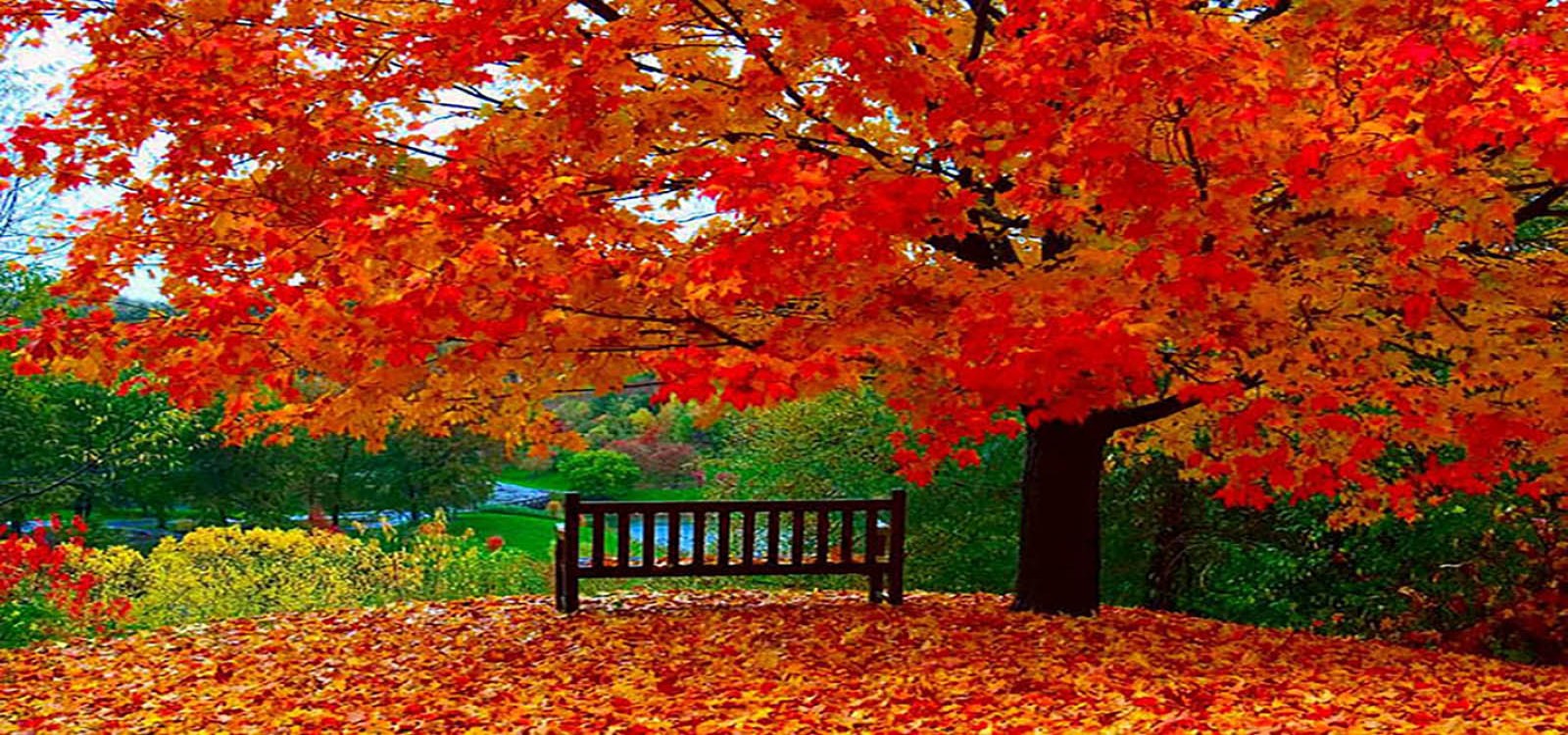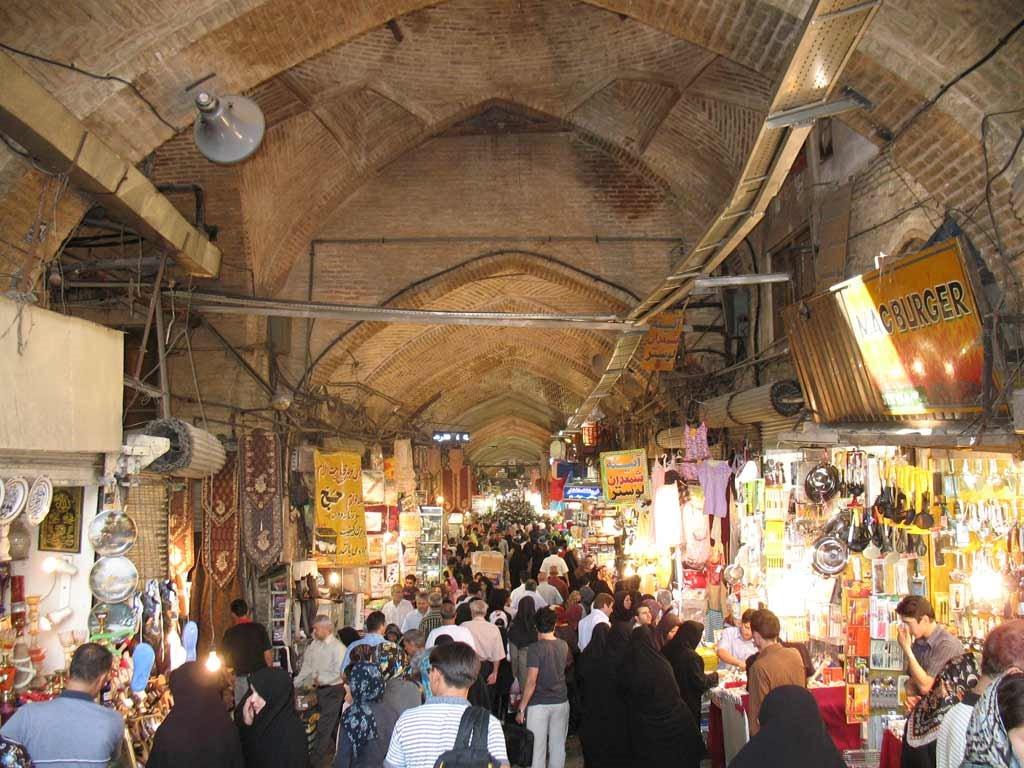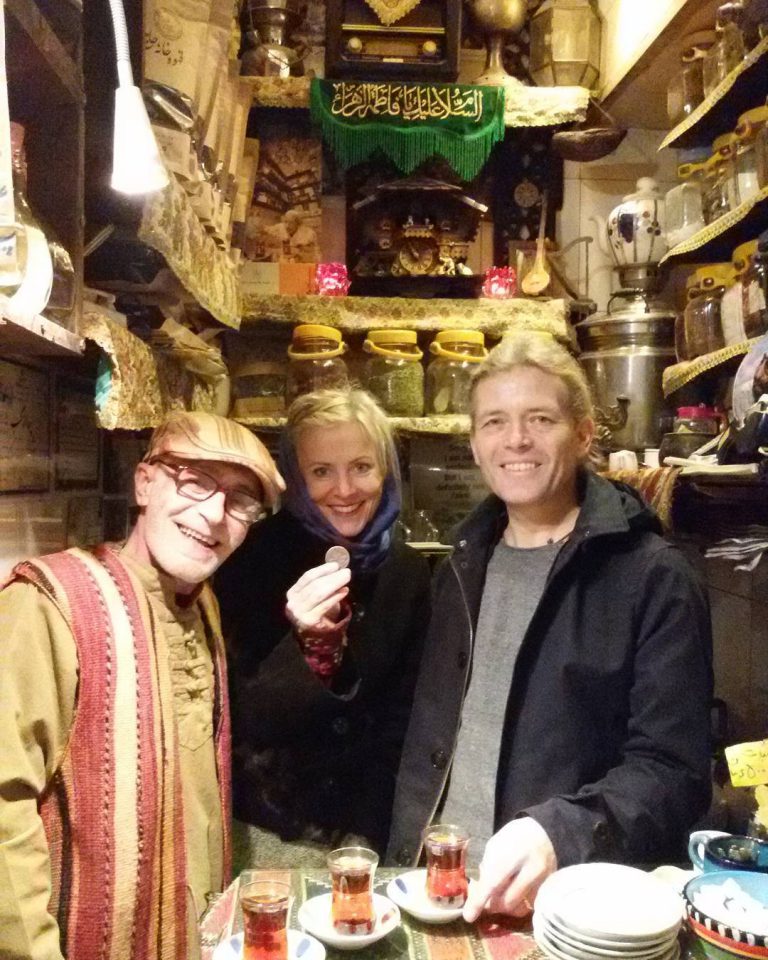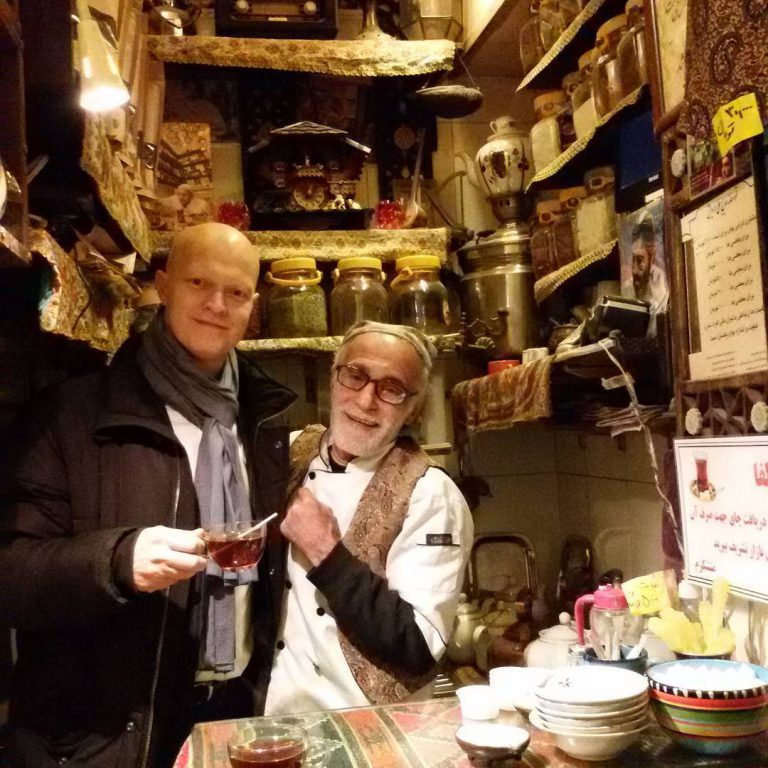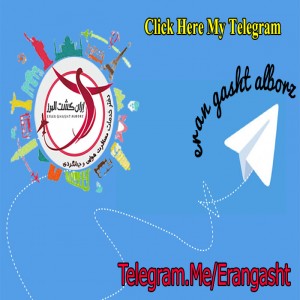
Tourism Information of Tehran Province
Tehran Province is one of the 31 provinces of Iran . It covers on area of 18,909 square kilometres (7,301 sq mi) and is located to the north of the central plateau of Iran .
The province was put as part of First Region with its secretariat located in its capital city , Tehran , upon the division of the provinces into 5 regions solely for coordination and development purposes on June 22, 2014 .
Tehran Province borders M�?zandar�?n Province in the north , Qom Province in the south , Semn�?n Province in the east , and Alborz Province in the west . The metropolis of Tehran is the capital city of the province and of Iran . As of June 2005 , this province includes 13 townships , 43 municipalities , and 1358 villages .
Tehran Province is the richest province of Iran as it contributes approximately 29% of the country's GDP . Furthermore , it houses approximately 18% of the country's population . Tehran Province is the most industrialized province in Iran ; 86.5% of its population resides in urban areas and 13.5% of its population resides in rural areas .
The province gained importance when Tehran was claimed the capital by the Qajar dynasty in 1778 . Today , Tehran , with a population of more than 7 million , is ranked amongst the 20 most populous metropolitan cities of the world .
Geography
The province of Tehran has over 12 million inhabitants and is Iran's most densely populated region . Approximately 86.5 percent reside in urban areas and 13.5 percent in rural areas of the province .
The largest rivers of this province are Karaj River and Jajrud River .
Mountain ranges such as The Alborz span the north ; Savad Kooh and Firooz Kooh are located in the north east ; Lavasanat , Qarah Daq , Shemiranat , Hassan Abad and Namak Mountains are in the southern areas ; Bibi Shahr Banoo and Alqadr are situated in the south east and the heights of Qasr-e-Firoozeh being located to the east of the province .
Environmentally , the climate of Tehran province in the southern areas is warm and dry , but in the mountain vicinity is cold and semi-humid , and in the higher regions is cold with long winters . The hottest months of the year are from mid-July to mid-September when temperatures range from 28 °C (82 °F) to 30 °C (86 °F) and the coldest months experience 1 °C (34 °F) around December–January , but at certain times in winter it can reach −15 °C (5 °F) . Tehran city has moderate winters and hot summers . Average annual rainfall is approximately 200 millimetres (7.9 in) , the maximum being during the winter season . On the whole , the province has a semi arid , steppe climate in the south and an alpine climate in the north .
History
Tehran Province has several archeological sites indicating settlements dating back several thousand years . Until 300 years ago , Rey was the most prominent of the cities of the province . However , the city of Tehran rose to become the larger city and capital of Iran by 1778 , and since then has been the political , cultural , economic , and commercial nucleus of Iran .
Tehran has over 1500 historical sites of cultural significance registered with the Cultural Heritage Organization of Iran . The oldest of these in Tehran province are the remains of two sites in Firuzkuh County that date back to the 4th millennium BCE .
Divisions
Tehran Province is sub-divided into fourteen Counties (shahrestan) , listed below with their populations at the 2011 Census :
· Tehran shahrestan
· Damavand shahrestan
· Rey shahrestan
· Shemiranat shahrestan
· Varamin shahrestan
· Shahriar shahrestan
· Eslamshahr shahrestan
· Robatkarim shahrestan
· Pakdasht shahrestan
· Firuzkuh shahrestan
· Qods shahrestan
· Malard shahrestan
· Pishva shahrestan
· Baharestan shahrestan
The counties comprise a number of municipalities :
· Municipalities : Absard , Andisheh , Baghershahr , Baghestan , Boumehen , Chahardangeh , Damavand , Eshtehard , Eslamshahr , Ferdowsieh , Firouzkouh , Garmdarreh , Gharchak , Ghods , Golestan , Shahriar , Javadabad , Hassan Abad , Kahrizak , Kilan , Lavasan , Malard , Nasimshahr , Owshan Fasham Meygoun , Pakdasht , Pardis , Pishva , Robat Karim , Roudehen , Sabashahr , Safadasht , Shahedshahr , Shahriar , Sharifabad , Tehran , Vahidieh , Varamin
Tehran province today
Tehran is the commercial heart of Iran . Tehran province has over 17,000 industrial units employing 390,000 people , 26% of all units in Iran . The province contains 30% of Iran's economy , and comprises 40% of Iran's consumer market . The province has three hydro dams namely Latiyan , Lar , and Amir Kabir as well as two natural lakes , providing the water supply of Tehran and the province .
The province contains 170 mines , over 330 square kilometres of forests , and over 12800 square kilometres of pasture .
Generally speaking , year round , regions such as the southern slopes of the Alborz Mountains , especially in the mountains , valleys , and rivers and artificial lakes formed behind the great dams of Amir Kabir , Latiyan and Lar along with natural lakes of Jaban and Tarr provide considerable recreation for the province .
Moreover , due to excessive snowfall in the northern areas of the province during the winter season , the Alborz mountains form an excellent environment for winter sports such as skiing . Dizin , Shemshak , and Tochal are the most popular skiing resorts .
National Rail Network
The city of Tehran is connected to the North , South , West and East with railway . It has weekly trains for Istanbul . Tehran is the headquarters of RAJA (Iran national railway) . There maybe plans to build high speed railway lines from Tehran to Mashhad and Esfahan .
Tehran Metro
Tehran is served by a system of metro of 3 urban lines (1, 2, 4) and one suburban line (5) serving Karaj and Tehran western suburbs . There are plans to extend the system to 8 urban lines and 4 express suburban lines .
Airports
Tehran Province has two main passenger airports :
· Mehrabad Airport
· Imam Khomeini Airport
It also has numbers of air force bases .
Parks , recreation and other attractions
· Darband hiking trail
· Chitgar Park
· Mellat Park
· Laleh Park
· Jamshidieh Park
· Niavaran Park
· Sa'ei Park
· Shatranj Park
· Tangeh Savashi
· Police Park
· Darabad hiking trail
· Darakeh hiking trail
· Jahan-e Kudak Park
· Azadi Sports complex
· Enghelab Sports Complex and Golf course
· Several caves , springs , and waterfalls outside Tehran
· Latyan Lake
· Lavizan Forest Park
· Vard-Avard Forest Park
· Khajeer National Park
· Kaveer National Park
· Tar Lake
· Amir Kabir Lake
· Lar Protected Natural Habitat
· Varjeen Protected Natural Habitat
Religious centers
Mosques , shrines , mausoleums , and tombs :
· Soltani Mosque , built by Fath Ali Shah
· Atiq Mosque , built in 1663
· Mo'ezz o-dowleh mosque , built by Fath Ali Shah
· Haj Seyd Azizollah mosque , built by Fath Ali Shah
· Al-javad mosque , Iran's first modernist design mosque
· The Old Sepahsalar mosque , another prominent Qajar era mosque
· The new Sepahsalar mosque (Madreseh e Motahari)
· Filsuf o-dowleh Mosque , Qajar era
· Moshir ol-Saltaneh Mosque , Qajar era
· Mo'ayyer ol-Mamalik Mosque , Qajar era
· Shahr Banu Mausopleum
· Javan-mard Qassab Mausoleum , a pre-Islamic semi-mythical hero
· Dozens of Imam-zadeh shrines , hundreds of years old , including that of Imam Zadeh Saleh
· Dozens of Saqa Khanehs : traditional places of prayer
· Several Tekyehs : traditional places for mourning Muharram ceremonies for Husayn ibn Ali
· Ebn-e Babooyeh cemetery , where numerous Iranian figures , such as Takhti and Ali Akbar Dehkhoda , are buried
· Zahir o-dowleh cemetery , housing the tombs of art and cultural figures such as Iraj Mirza , Mohammad Taghi Bahar , Forough Farrokhzad , Abolhasan Saba , Ruhollah Khaleghi , and Darvish-khan are buried
· Kordan Tomb , Seljuqi era , Karaj
· Maydanak Tomb , 13th century , Karaj
· The Polish cemetery north of Tehran , where numerous Western Allied soldiers of World War II are buried
Tehran: The City of Museums and Cafes Around 228 years ago, on the first day of the Iranian New Year, the founder of the Qajar dynasty declared Tehran the new capital of the nation. Just a few centuries ago, Tehran was an unknown small village which was not even as large as the city of Rey the name of which has been mentioned in Torah and the age and beauty of which was tantamount to those of Babylonia, but now Rey is a part of great Tehran, the largest city of Iran. Today, Tehran comprises Qajar-remained ancient neighborhoods and modern high-rise buildings and streets, as well as museums, art galleries, cinemas, palaces, gardens, abbeys, fireplaces, churches, mosques, parks, cafés, hotels, and bazaars. You might think of Tehran as a polluted and crowded city with lots of noise, but Tehran is far more than this; it is the political, economic and even cultural center of Iran, a city full of life with too much to experience. Tehran houses many attractions and activities making it a must-see on your list. Cultural and historic monuments, a variety of museums, welcoming people, numerous parks, plentiful restaurants and pleasant climate encourage you to stay some more days in Tehran. The City of Tehran enjoys many notable museums. Due to numerous and various museums it is fair to call Tehran Iran’s city of museums. Each of these museums plays an important role in safeguarding Iranian history, culture and art. Among fascinating museums to visit in Tehran are National Museum, Crown Jewels Museum, Carpet Museum, Abgineh Museum, Reza Abbasi Museum, and Museum of Coins.
Tehran is also boasting about its towers. Azadi Tower, known as the symbol of Tehran, was built in 1971 in commemoration of the 25,00th anniversary of the Persian Empire. Milad Tower, almost 10 years old, is a telecommunication tower with tourism facilities. It is one of the world's tallest towers is the symbol of Iran's progress and development. To these two, the oldest tower in the greater Tehran, Tughrul tower, has to be added. Close to the Grand Bazaar of Tehran there is the most magnificent palace of Tehran, Golestan Palace, the only world heritage site in Tehran. Besides the Golestan Palace, in the north of city two beautiful large palaces belonging to “Pahlavid” kings, namely “Niavaran” and “Sa'dabad” are showing off. These palaces which are aligned in the same direction at a distance of 14 kilometers from each other are collections of several mansions, most of them currently used as museums. North of Tehran, as the affluent part of the city, also enjoys some hiking trails such as “Darband”, “Darake” and “Tochal”
An Amazing Hidden Gem in the Heart of Tehran Grand Bazaar I want to share a small but amazing secret! If you happen to be touring through the labyrinthine alleys of Grand Bazaar in Tehran and get a bit exhausted... I want to share a small but amazing secret! If you happen to be touring through the labyrinthine alleys of Grand Bazaar in Tehran and get a bit exhausted bargaining with shopkeepers for the best possible prices, remember there is an awesome place just around to get refreshed! If you look a little hard you can fulfill a quest to find the smallest tea house in the world serving tea to customers over the last century, Haj Ali Darvish Tea House. It doesn’t matter where you have started your tour in Tehran’s Grand Bazaar, nothing can match having a break at Haj Ali Darvish Tea House and enjoy a pleasant cup of tea or more and a warm and friendly welcome by Kazem, Haj Ali’s son.
Tehran Grand Bazaar You can ask anyone for his Tea House and everyone shows you the way but you can as also find this tiny tea house by yourself as it is next to Abdollah Khan School and Imam Mosque. In old days, shopkeepers used to order their daily tea from tea houses, so there was no need to have a large café to serve the customers, therefore even a tiny café was enough to handle a large number of customers.So don’t expect to see any tables in this tea house. Once you arrive at the 2 square meters café, you will face a warm smile of the old man behind the counter, Kazem offering you herbal teas. There is a menu on the wall stating that each cup costs you only 2000 Tomans or almost 0.5 Euro but the same cup of tea may be 1500, 1000, 500, 200 or only 100 Tomans for some, which means he accepts whatever the customer can pay out of generosity. Also, he asks guests whether it is their first time at his tea house as he would not charge the costumers for the first couple of cups. He has stated himself that he is in good financial status that makes him independent of the Tea House earnings and he is doing the job out of passion and to keep this long lasted café and now a national cultural heritage running. But his business is not only limited to the neighborhood shopkeepers and shoppers as there is a steady stream of curious and excited tourists to his unusually small Tea House. Visiting his place is becoming a part of tourists’ Tehran tour itinerary. He also has an Instagram account with more than a couple of thousands of followers and posting photos and selfies with guests regularly.
Tourists at the Tea House The tea house (or simply the café) was founded in 1917 by Haj Hassan Shamshiri who sold it to Haj Ali Darvish in 1962 and some years ago Kazem started working in the tea house as his father was too old and paralyzed. Iran Cultural Heritage, Hadicrafts and Tourism Organization (ICHTO) announced Haj Ali Darvish Tea House as the world’s smallest tea house and a national intangible heritage in September 2016 and held an official celebration concurrent to the 100 years anniversary of Haj Ali Darvish Tea House with the presence of himself.
The tea house (or simply the café) was founded in 1917 by Haj Hassan Shamshiri who sold it to Haj Ali Darvish in 1962 and some years ago Kazem started working in the tea house as his father was too old and paralyzed. Iran Cultural Heritage, Hadicrafts and Tourism Organization (ICHTO) announced Haj Ali Darvish Tea House as the world’s smallest tea house and a national intangible heritage in September 2016 and held an official celebration concurrent to the 100 years anniversary of Haj Ali Darvish Tea House with the presence of himself.
Tourists at the Tea House You can drink different herbal teas besides the regular tea or even order coffee and cappuccino. Kazem who is now 60, always says he has done lots of research how to make the best tea; He has traveled abroad and tested different styles such as English, Turkish and Arabic, but he found none matching Persian style, and the method he learned it from his father. He believes he doesn’t just sell tea but he offers a unique experience! He welcomes the customers, respects them and treats them in a friendly manner, so they get delighted by both the environment and the tea to return regularly. The Grand Bazaar of Tehran is a must-see attraction itself which attracts many tourists to wander in the long twisty alleys and observe the wonderful architecture, but you can also add more to your cultural experience and visit this small tea house and enjoy both a cup of tea and a nice talk with a hospitable man. To visit the Grand Bazaar and the smallest tea house you could ever experience, pick up a Tehran daily tour or Tehran city break with us!
Religious centers
Mosques , shrines , mausoleums , and tombs :
· Soltani Mosque , built by Fath Ali Shah
· Atiq Mosque , built in 1663
· Mo'ezz o-dowleh mosque , built by Fath Ali Shah
· Haj Seyd Azizollah mosque , built by Fath Ali Shah
· Al-javad mosque , Iran's first modernist design mosque
· The Old Sepahsalar mosque , another prominent Qajar era mosque
· The new Sepahsalar mosque (Madreseh e Motahari)
· Filsuf o-dowleh Mosque , Qajar era
· Moshir ol-Saltaneh Mosque , Qajar era
· Mo'ayyer ol-Mamalik Mosque , Qajar era
· Shahr Banu Mausopleum
· Javan-mard Qassab Mausoleum , a pre-Islamic semi-mythical hero
· Dozens of Imam-zadeh shrines , hundreds of years old , including that of Imam Zadeh Saleh
· Dozens of Saqa Khanehs : traditional places of prayer
· Several Tekyehs : traditional places for mourning Muharram ceremonies for Husayn ibn Ali
· Ebn-e Babooyeh cemetery , where numerous Iranian figures , such as Takhti and Ali Akbar Dehkhoda , are buried
· Zahir o-dowleh cemetery , housing the tombs of art and cultural figures such as Iraj Mirza , Mohammad Taghi Bahar , Forough Farrokhzad , Abolhasan Saba , Ruhollah Khaleghi , and Darvish-khan are buried
· Kordan Tomb , Seljuqi era , Karaj
· Maydanak Tomb , 13th century , Karaj
· The Polish cemetery north of Tehran , where numerous Western Allied soldiers of World War II are buried







